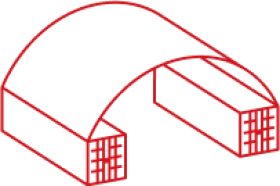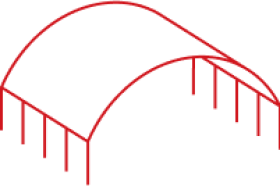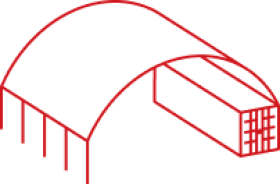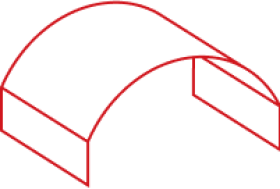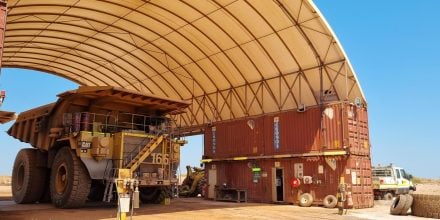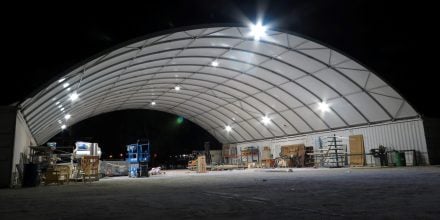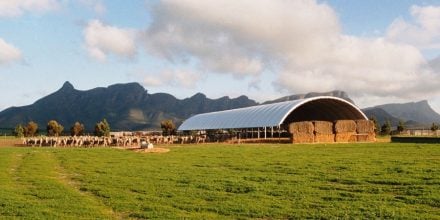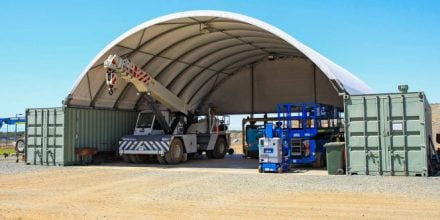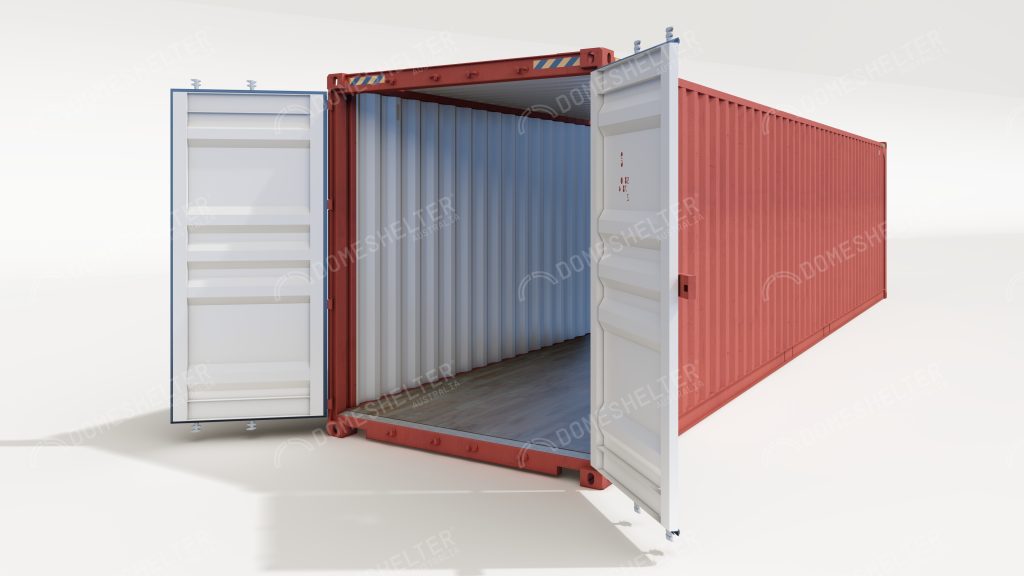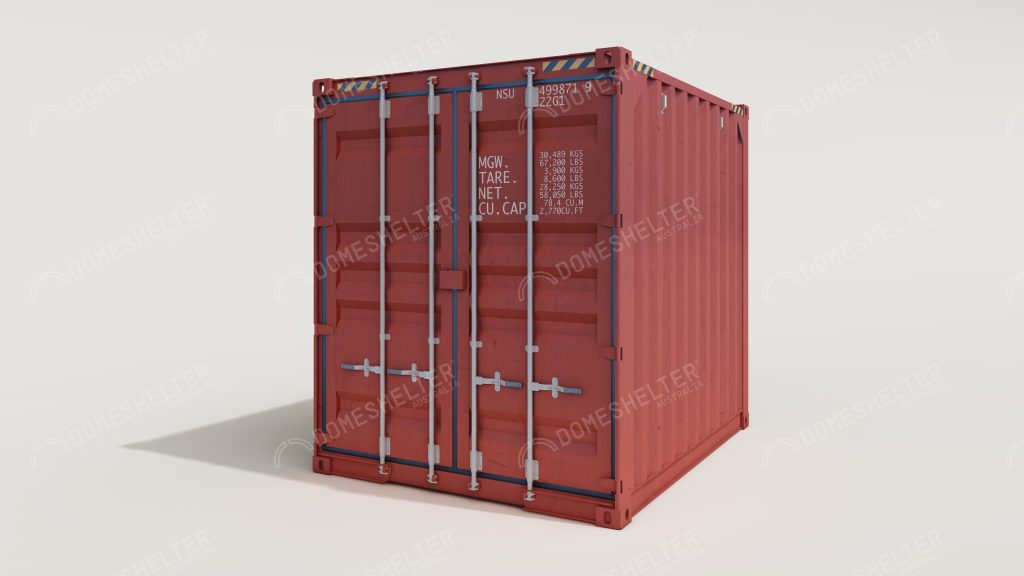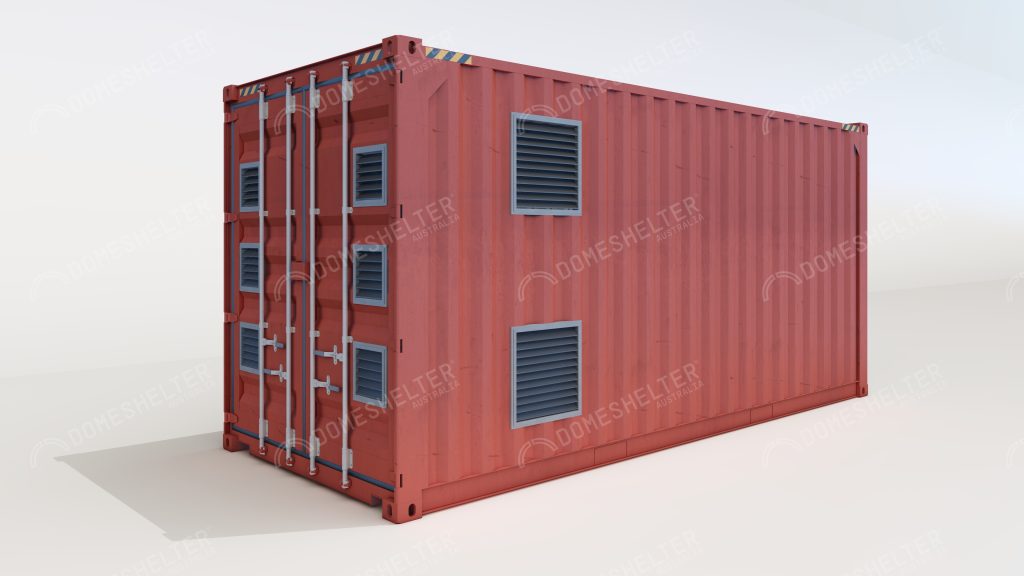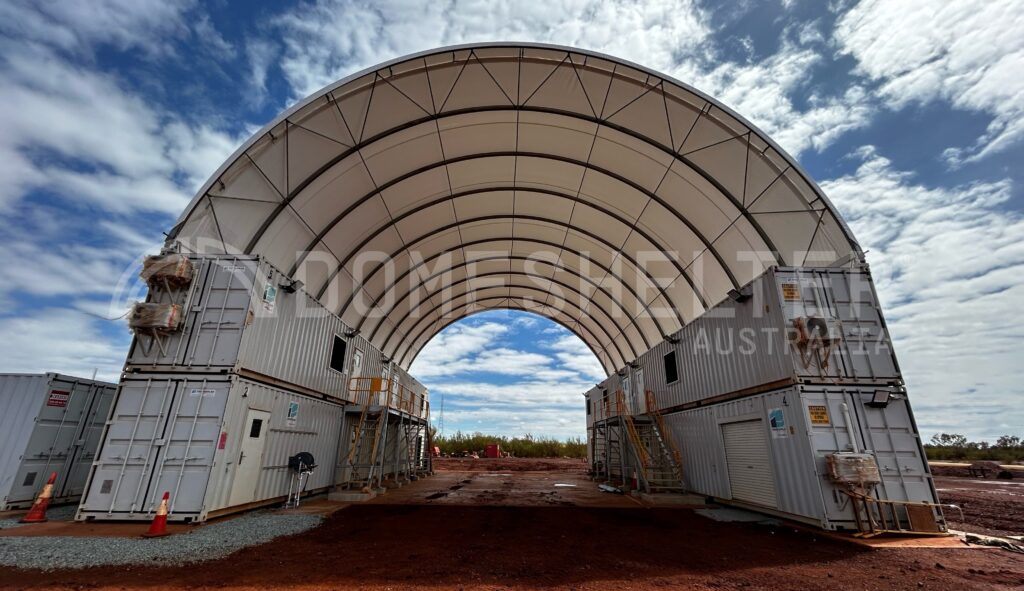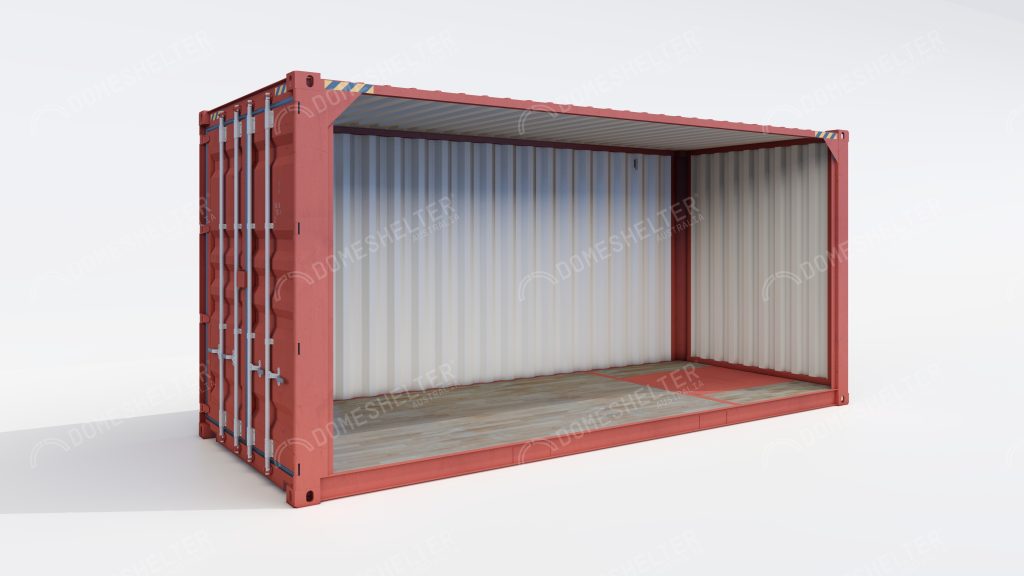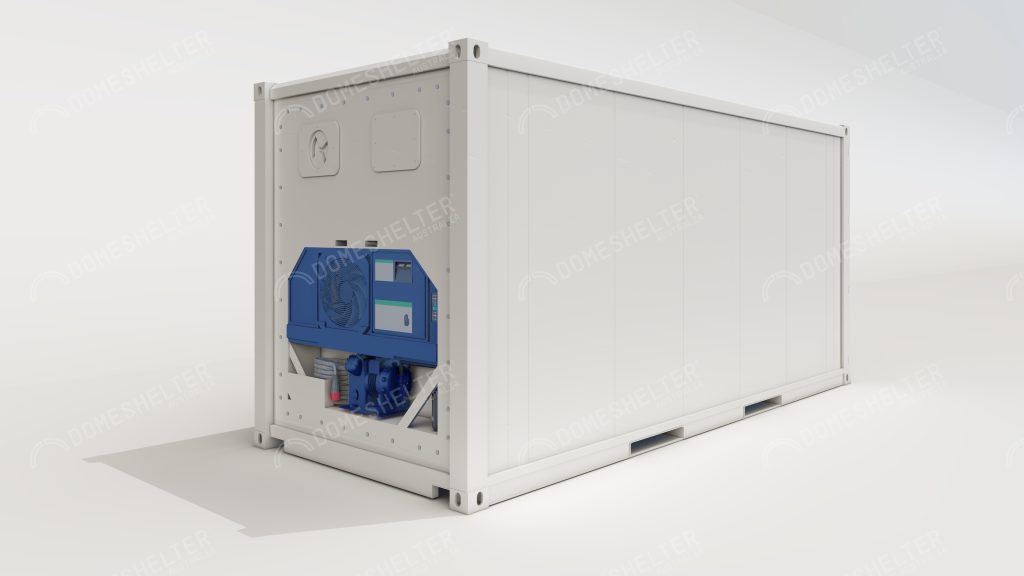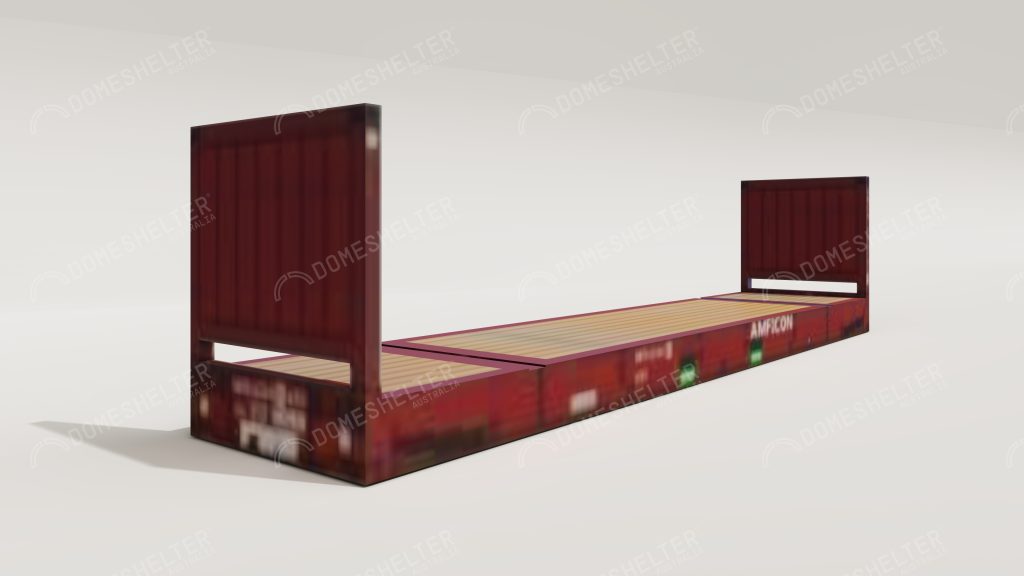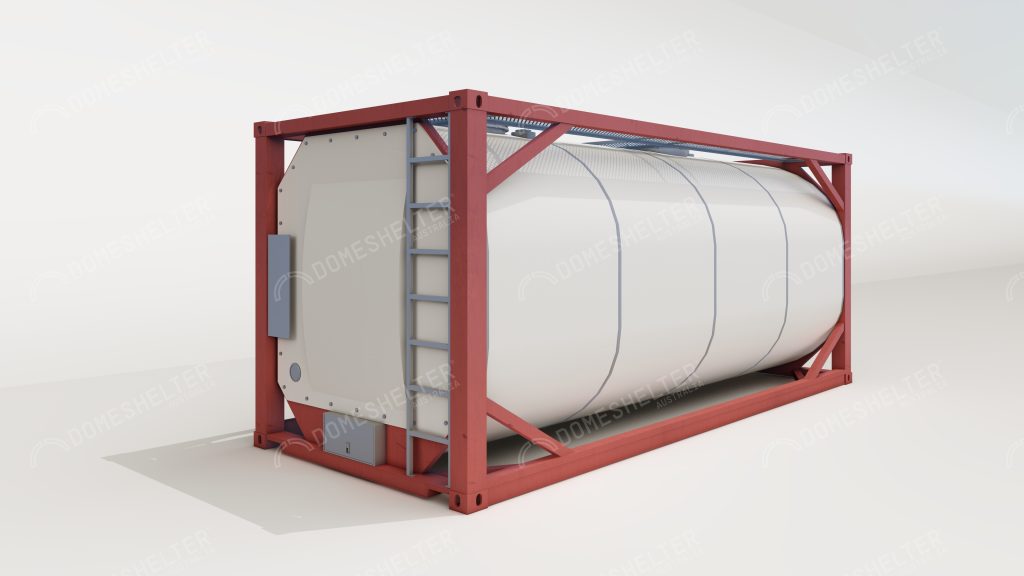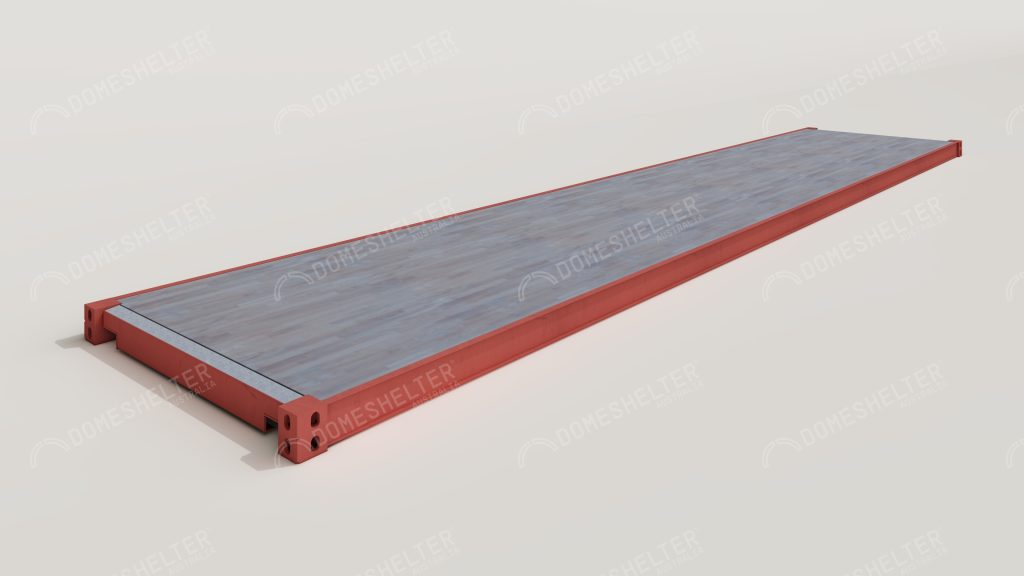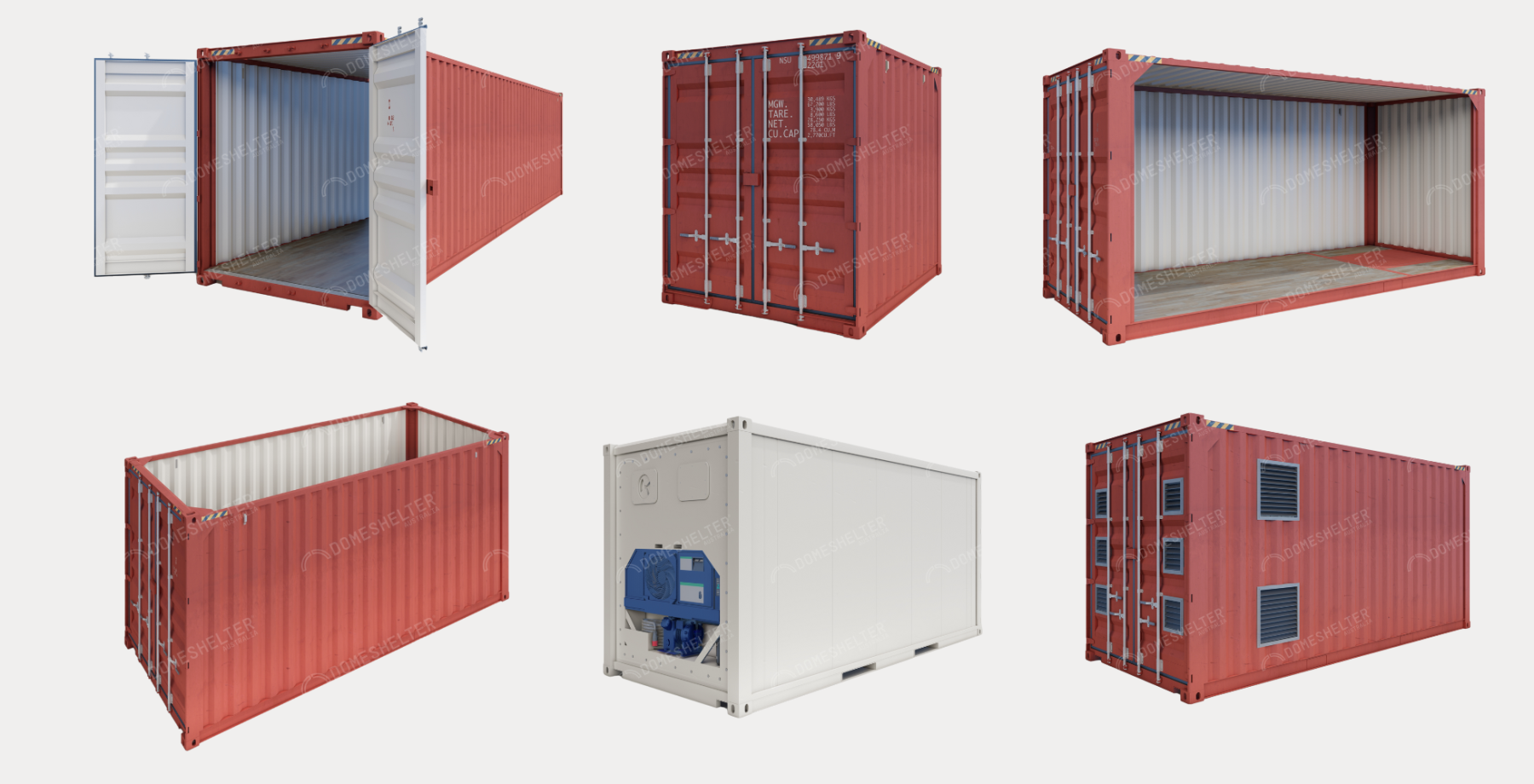
While Standard ISO Sea Containers are the industry norm for Container Mounted Fabric Shelters, past DomeShelter™ Clients have presented with a range of different Container types hoping to use them for a DomeShelter™ Structure.
While it can be possible to mount a DomeShelter™ Structure on an alternative container type, this should always be checked by an experienced professional before attempting, as mounting a Fabric Shelter on an unsuitable container could end badly.
This article will detail the main container types there are, and whether they could potentially be used to mount a Fabric Structure.
What Container Types Are There?
There are a range of container types and designs available. Standard DomeShelter™ Structures are engineered and designed to suit standard ISO sea containers. Mounting on different container types may be possible after a consultation process with an experienced professional.
The ten main container types are:
- Standard Containers
- Reefer Containers
- Flat Rack Containers
- Open Top Containers
- Tank Containers
- Platform Containers
- ISO Tank Containers
- High Cube Containers
- Open-Side Containers
- Ventilated Containers
Below we will outline each and whether they could be utilised for a Fabric Shelter.
Standard Containers
Also known as ‘Dry Containers’, these are the most common shipping containers. They are used to transport general cargo such as packaged goods and equipment. The containers themselves feature solid walls and a roof that protect the cargo from weather conditions during transit. These are the default and preferred choice for a Container Mounted DomeShelter™ Fabric Structure.
Fabric Shelter Mounting Ability = Easy.
High Cube Containers
High Cube Containers are similar to Standard ISO Containers, but are an additional 300mm higher. These are commonly found, and are useful due to providing more room vertically while maintaining standard dimensions in length and width.
Fabric Shelter Mounting Ability = Easy
Ventilated Containers
Ventilated Containers have small openings or vents that allow for controlled airflow. They are used for transporting goods like agricultural products, flowers, or moisture-sensitive items that require ventilation. They have the same structural makeup as Standard/Dry Containers.
Fabric Shelter Mounting Ability = Easy
Modified Containers
Modified Containers, also called Fitted-Out Containers, have been modified from their original design intent, usually to be used for human habitation, rooms, storage spaces, and the like (e.g. windows or doorways added). Containers with major structural changes must be designed/analysed by a structural engineer to ensure the structural integrity of the container. Containers that are modified without a structural engineer’s analysis/input may be rejected or unfit for use. Although it may be easy to cut a hole or doorway into the side of a container, always run it past an engineer before starting up those tools! A DomeShelter™ Consultant may be able to assist in providing contacts for reputable Modified Container suppliers if a client wishes to use one for their DomeShelter™ Fabric Structure.
Fabric Shelter Mounting Ability = Varies depending on the container type & extent of modifications required. Please discuss with a DomeShelter ™ Representative.
Open-Side Containers
Open-Side Containers allow for full side access, simplifying the loading and unloading of cargo and providing flexibility for cargo that cannot be accommodated through standard container doors. Due to the lack of fixed side paneling, often the structural capacity of the roof of these containers is much less than a standard sea container. If clients wish to use these type of containers, a structural engineer would need to specify strengthening beams or columns to make the container structurally suitable to handle a DomeShelter™ Fabric Structure.
Fabric Shelter Mounting Ability = Moderate, additional engineering required.
Reefer Containers
Also known as Refridgerated Containers, these are designed for transporting perishable goods that need temperature control. They have built-in cooling systems and are used to transport items like fruits, vegetables, pharmaceuticals, and certain chemicals. Reefer Containers can be repurposed to make insulated tool stores, among other worksite applications. However, care must be taken if intending to mount a DomeShelter™ Fabric Structure onto one, as their makeup is quite different from a Standard Container. Their design can prevent a mounting rail being attached to the top of the container, as insulation paneling inhibits access to bolts from the inside. Insulation can also disqualify welded mounting rails due to fire risk.
Fabric Shelter Mounting Ability = Generally quite difficult.
Flat Rack Containers
Flat Rack Containers are designed for ideal transport of oversized, irregularly shaped or heavy cargo, like machinery or vehicles, featuring collapsible sides and an open roof. Flat Rack Containers enable easy loading and unloading from the side, and are used when cargo exceeds the dimensions of a standard container. As a general rule, these are not suitable for mounting a DomeShelter™ Fabric Structure due to their open roof and sides.
Fabric Shelter Mounting Ability = Difficult, not recommended. Extensive customisation required.
Tank Containers
Tank Containers are specifically designed for the transportation of liquids and gases in bulk. They feature cylindrical tanks inside metal frames or cages, for easy loading and stacking. Drilling or welding into these should be a serious safety concerns due to hot works near potentially flammable materials. Drilling may also affect the structural integrity or certification of the container.
Fabric Shelter Mounting Ability = Not possible.
Platform Containers
Also known as Flatbed Containers, these consist of a flat platform without sides or a roof. These are used to transport oversized or heavy cargo that exceeds the dimensions of standard containers.
Fabric Shelter Mounting Ability = Not possible
How Do You Know if a Container is Suitable?
Any container other than a Standard ISO or High Cube Container, and any container that appears to have been modified, must be queried and cannot be presumed to be suitable.
These would need to be analysed by a structural engineer and assessed for their capacity to handle the structural loads imposed by a Fabric Structure.
This is related to weight loading and forces applicable, as well as other key engineering concerns associated with any safe, compliant structure.
Why Does a Container Affect the Mounting System?
Some Containers have different top edge rails to others, meaning a standard connection fabric shelter mounting rail would be unsuitable.
DomeShelter™ Structures are designed for containers that have a 60×60 Square Hollow Section along the top edge. Any other material or container design will need to be discussed with a DomeShelter™ Representative to ensure a streamlined purchasing, engineering and installation process.
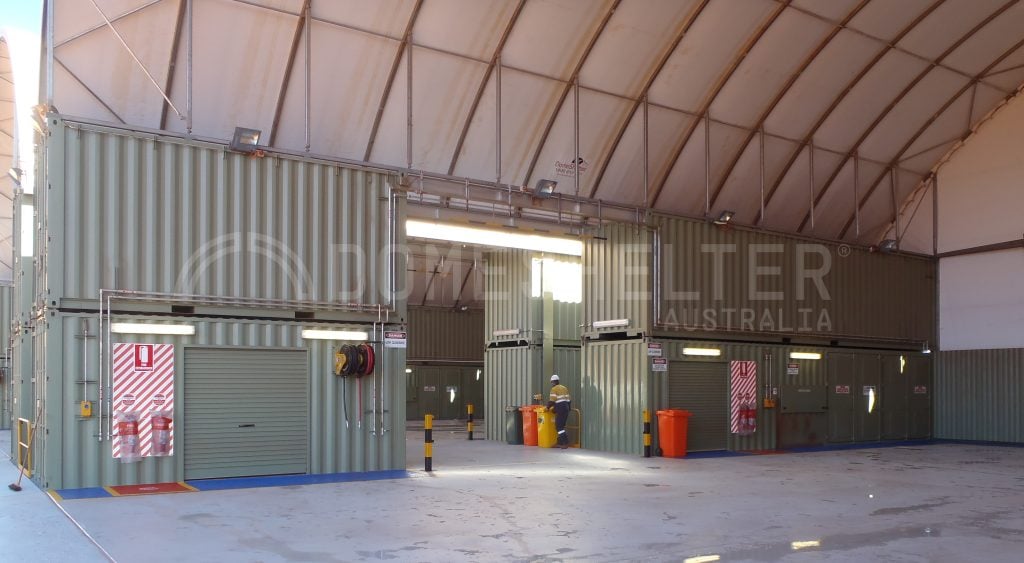
What if I Try to Use an Unsuitable Container Anyway?
There are several risks to trying to use an unsuitable container type, including but not limited to:
- Risk of purchased shelter not fitting or being incompatible when it gets to site
- Risk of failure, resulting in loss of equipment, products or injury/death of personnel
- No engineer’s certification, resulting in no insurance and a void warranty
- Noncompliance with local regulations
What Should I Do if My Container is Unsuitable?
Depending on the extent of what is meant by unsuitable, some may require strengthening to accommodate a fabric shelter, whereas others may need a total replacement.
We’re Here to Help
DomeShelter Australia’s experienced in-house project managers and engineers benefit from over 30 years designing and manufacturing the highest-quality Fabric Shelter Solutions. If you have an alternative container type that you’re interested in using for a Fabric Shelter, don’t hesitate to get in touch with our friendly team and we will help deliver the best solution for your needs.
